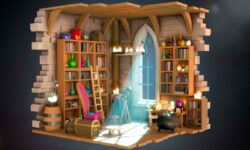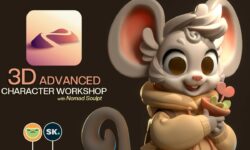Soft Body Physics Simulation Guide in Blender 2.9 by Stephen Pearson
Release date:2022
Author:Stephen Pearson
Skill level:Beginner
Language:English
Exercise files:Yes
Do you find simulations to be hard to understand? Or have trouble learning them? Learning Blender simulations is quite daunting and can be very frustrating at times. That is why I created this course. In this course you will learn all about the soft body simulation in Blender! Basically, if you don’t know, the soft body simulation is a way to add physics to your objects. It allows you to create flags, clothing, cushions, bouncing balls, and about anything you can think of. We will be going into detail on each setting and how it all works. In the first couple sections we discuss the different options and values and how they effect the simulation.
After that we will be creating 3 different complete scenes using the soft body simulation. The first one is a soda can getting crushed. We will first start out by modeling the soda can adding a texture to it and then using the soft body simulation we will crush it.
The second tutorial we will be creating Tetris in Blender. After modeling the pieces I will describe how to add the soft body simulation to each one and render it out.
Finally the last section we will be learning how to create an obstacle course for a sphere to go through. In this section you will learn about modeling, animating materials, hair dynamics and much more!
If you are wanting to learn more about Blender’s Soft body Simulation or if you just want to improve your skills in Blender this course is for you!
Programs that are used in this course: Blender
I hope you are excited to jump into this course and create your own simulations!
Can’t wait to see what you create.
Thanks
Stephen





 Channel
Channel





